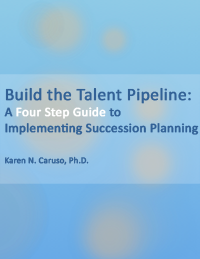Succession planning and replacement planning are both strategies that are incredibly important to the lifeline of any organization. However, these two processes are often confused, even by senior organizational leaders. Despite the focus that boards and C-level leaders have placed on organizational talent strategy, I often encounter organizations that still equate succession planning with creating a list of replacements. I refer to this approach as the "names in boxes" method of succession planning. What distinguishes the two is basically the difference between executing short-term and long-term strategies. Do organizations need to employ one or the other, or are both strategies necessary to be successful? I would argue that the two talent strategies must work together.
 Replacement Planning
Replacement Planning
Replacement planning is tactical in nature but vitally important for all companies, regardless of size. Replacement plans ensure the continuity of operations and focus on how critical positions will be filled on short notice.
- Organizations should have replacement plans for all leadership positions, as well as other key individual contributor roles to reduce talent risks. Read more on how to identify critical positions.
- Replacement plans should identify 1-3 people for each critical position who could step into the position in an emergency situation, and include an indication of each person's readiness to assume the role.
- Lastly, replacement plans should consider the type of support that will be necessary and provided to an individual who would assume a replacement role.
Oftentimes, replacements are viewed as temporary. Replacement candidates may or may not be considered candidates for the position on a permanent basis unless they meet all of the requirements for the position. While replacement plans are critically important to organizational continuity, these plans only address short-term needs. Replacement planning assumes a stable and unchanging organizational structure and may encourage "silo-d" thinking about talent since in most cases, replacements come from a specific specialty area.
Succession Planning
Succession planning is a long-term talent strategy. The succession planning process is aimed at ensuring the continuous development of talent within the organization so that when a need arises or vacancy occurs, the organization can pull from the existing talent versus always looking to outside for talent. The succession planning process is a continuous process and includes:
- The selection of current and future critical positions in the organization,
- The regular assessment of current talent and identification of talent pools, and
- Ongoing planning and development of individuals through a variety of experiences.
In a previous article, I wrote about the way in which succession planning supports innovation and growth by mitigating four critical talent risks (Vacancy, Readiness, Transition, Deployment). Organizations must take steps to reduce the risk of vacancies, ensure that they have the talent ready necessary to meet needs, smooth the transition of leaders to new positions, and deploy talent throughout the organization. When organizations use the combination of replacement planning and succession planning, they will mitigate all four talent risks. Both talent strategies are equally important and must be integrated to ensure the organization has the talent it needs in the future.
Getting Started
The business case for talent management, especially succession planning, has never been stronger yet the results are not there. Succession planning is often viewed as an overwhelming undertaking for leadership teams so their focus fades after they create replacement plans. Implementing succession planning does not have to be like moving a mountain if approached in an evolutionary way.
My colleagues and I created a practical guide to implementing succession planning using succession planning software in 4 basic steps. Click here to download Build the Talent Pipeline: A Four Step Guide to Implementing Succession Planning.

